


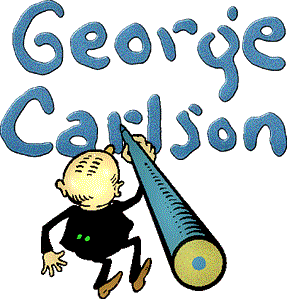 |
See Carlson art in issue #2 of |
George Leonard Carlson was supposedly born in 1887, a year that may have signaled a sea change in the career paths of illustrators. John Austen and Kay Nielsen were born in 1886, Frank Godwin, John Held, Jr., Harry Clarke and Percy Crosby in 1889. The painters seem to be giving way to the pen & ink school.
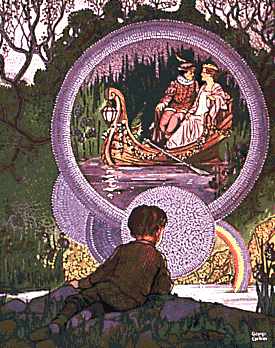 I
say, supposedly, because the earliest work I can find from the
man is in 1917 (at left from The Magic Stone: Rainbow Fairy
Stories), when he'd have been 30 years old. I've heard of
another from 1916, but that still leaves a major gap during his
twenties, usually the most productive years for an artist. The
only source of birth date info that I've found is from The
Who's Who of American Comics and I'm double-checking that.
I
say, supposedly, because the earliest work I can find from the
man is in 1917 (at left from The Magic Stone: Rainbow Fairy
Stories), when he'd have been 30 years old. I've heard of
another from 1916, but that still leaves a major gap during his
twenties, usually the most productive years for an artist. The
only source of birth date info that I've found is from The
Who's Who of American Comics and I'm double-checking that.
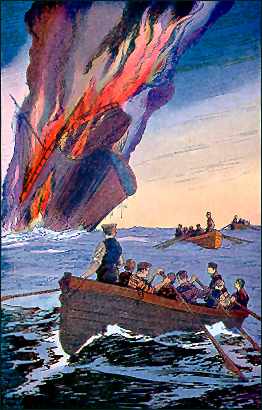 There's
nearly another decade gap in his career. In 1920 and 1921 he illustrates
two children's books by Gene Stone: Jane and the Owl and
Adventures of Jane. Then it isn't until 1928 when I pick
up his trail again. That's the year he did the illustrations for
The Adventures of Toby Spaniel. He did the dj for The
Whirlwind in 1929. Then in 1931, he provides a color frontis
(at right) and b&w illustrations for Fact and Story Reader
- book eight. The illustrations are in pen & ink and it
is this medium in which he excels.
There's
nearly another decade gap in his career. In 1920 and 1921 he illustrates
two children's books by Gene Stone: Jane and the Owl and
Adventures of Jane. Then it isn't until 1928 when I pick
up his trail again. That's the year he did the illustrations for
The Adventures of Toby Spaniel. He did the dj for The
Whirlwind in 1929. Then in 1931, he provides a color frontis
(at right) and b&w illustrations for Fact and Story Reader
- book eight. The illustrations are in pen & ink and it
is this medium in which he excels.
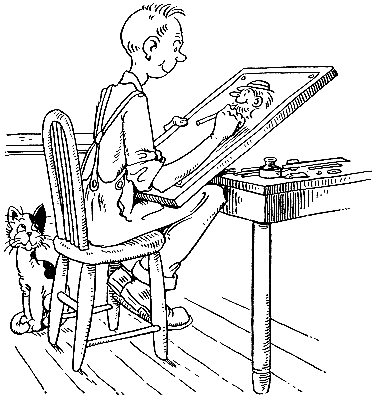 It's
frustrating not to be able to fill you in on what must have been
an interesting career up to this point. You see, in 1933 he authored
a book, Draw Comics -Here's How-! in which he proclaims
to be an expert in comic strips and panels. (In fact, it credits
him as also being the author of Cartoon Comics, and How to
Draw Them, which I've yet to see.) And he IS! An expert, that
is.
It's
frustrating not to be able to fill you in on what must have been
an interesting career up to this point. You see, in 1933 he authored
a book, Draw Comics -Here's How-! in which he proclaims
to be an expert in comic strips and panels. (In fact, it credits
him as also being the author of Cartoon Comics, and How to
Draw Them, which I've yet to see.) And he IS! An expert, that
is.
The book is filled with practical samples and instructions and real-life tips and techniques. It was not written by a tyro, but I have not been able to locate even a mention of Carlson in any of my books on comics and cartoons. Nada. Zip. If it weren't for Harlan Ellison I don't think anyone would even know his name. More on that later.
If I've dwelt abnormally long on a portion of his life and career about which I know little, it's simply because of that dearth of information and my inability to track his career prior to this point. He was 46 years old when he wrote Draw Comics! and I've found mention of only five or six books that he illustrated prior to this point. And none of them were cartoony. Where did he get his experience? Was he ghosting a newspaper strip for someone famous? Curious minds want to know?
Onward to a biography filled with stuff I do know!
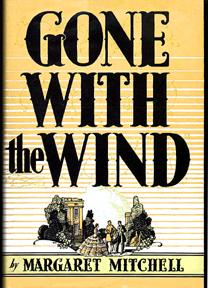 In
1936 he illustrated the dust jacket for the first novel by an
unknown author. It's a sprawling tale of the Civil War and the
South and Carlson does a small drawing of a southern belle and
two suitors. Within five months, a million copies of Carlson's
dj were printed and sold. At 49, he was an overnight sensation.
In
1936 he illustrated the dust jacket for the first novel by an
unknown author. It's a sprawling tale of the Civil War and the
South and Carlson does a small drawing of a southern belle and
two suitors. Within five months, a million copies of Carlson's
dj were printed and sold. At 49, he was an overnight sensation.
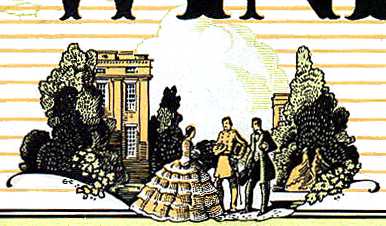
 Well,
not really. He apparently wasn't besieged with requests for dust
jackets of antebellum, bellum or even postbellum sagas. Rather
he seems to have gone from the sublime to the sublimely ridiculous,
The following year, Carlson wrote and illustrated a series of
Pastime Fun Books for Platt and Munk. Fun-Time Games,
Puzzles, Stunts, Drawings, etc. That year
saw another how-to book, Points on Cartooning. Then he
became the illustrator for Howard Garis' classic nonsense series
of Uncle Wiggily stories in 1939. (My copies are misplaced
in the vast VCofK, so I can't share an Uncle Wiggily drawing
with you.) It's in 1942 that he began the work that would bring
him to the attention of both Harlan Ellison and myself.
Well,
not really. He apparently wasn't besieged with requests for dust
jackets of antebellum, bellum or even postbellum sagas. Rather
he seems to have gone from the sublime to the sublimely ridiculous,
The following year, Carlson wrote and illustrated a series of
Pastime Fun Books for Platt and Munk. Fun-Time Games,
Puzzles, Stunts, Drawings, etc. That year
saw another how-to book, Points on Cartooning. Then he
became the illustrator for Howard Garis' classic nonsense series
of Uncle Wiggily stories in 1939. (My copies are misplaced
in the vast VCofK, so I can't share an Uncle Wiggily drawing
with you.) It's in 1942 that he began the work that would bring
him to the attention of both Harlan Ellison and myself.
Jingle Jangle Comics started in February of 1942. Carlson drew the covers for the first six issues and two 6- to 10-page strips in each issue until its demise with #42 in December of 1949. These two strips, Jingle Jangle Tales and The Pie-Face Prince of Pretzelburg were some of the most creative and truly comic contributions to the comic book medium, ever!
Harlan Ellison (who provided me with some excellent pointers for this page) waxed wildly enthusiastic about Carlson and The Pie-Face Prince in a nine-page essay titled Comic of the Absurd in Dick Lupoff and Don Thompson's seminal All in Color for a Dime in 1970. You should read that essay, and the other ten, but to give you a flavor of how Ellison favors Carlson, he mentions him alongside Bosch, Van Gogh, Vermeer, Monet, Dali, Wyeth, Rembrandt and Picasso. And I'm not arguing with him.
In order to convey the genius that was Carlson, Ellison was, for once, at a loss for words. He was reduced to describing and transcribing a Pie-Face Prince story in his essay. He could not have paid him a higher compliment. I'm no better, that's for sure. One panel cannot possibly convey the outrageousness of Carlton's wit and cartoons. But, for better or for worse, here's one.

You must try to imagine an unrelenting stream of five or six panels per page, heavy with stream-of-consciousness punning text and slapstick-silly sight gags. It builds with a momentum that never stops, piling clever plays on words with images that start you giggling and leave you laughing. Pure unadulterated nonsense of only the finest sort. For eight years. Every other month, twice in each issue. Non-sequitur after the other. Good humor. Folks like Will Elder and Robert Crumb must have been fans.
 Carlson did other comic book work,
but it was primarily variations on his puzzle fun pages. He released
a book of them, 1001 Riddles for Children in 1949 and a
similar collection of his 1937 Fun Books titled Fun
For Juniors (at left). The latest work I've seen is another
book on drawing, I Can Draw, in 1953, meant for very young
artists. He shows up in some Uncle Wiggily books
in the early Fifties, but they might be reprints. Nothing has
ever topped the sustained zaniness of his Jingle Jangle
work. Search it out and get set to laugh. I'm going downstairs
to sit in my comfy chair (no, NOT the comfy chair! - even Monty
Python couldn't sustain the pace and longevity that Carlson did)
and reread my run of Jingle Jangle Comics. I've got a sore
throat and they say that laughter is the best medicine.
Carlson did other comic book work,
but it was primarily variations on his puzzle fun pages. He released
a book of them, 1001 Riddles for Children in 1949 and a
similar collection of his 1937 Fun Books titled Fun
For Juniors (at left). The latest work I've seen is another
book on drawing, I Can Draw, in 1953, meant for very young
artists. He shows up in some Uncle Wiggily books
in the early Fifties, but they might be reprints. Nothing has
ever topped the sustained zaniness of his Jingle Jangle
work. Search it out and get set to laugh. I'm going downstairs
to sit in my comfy chair (no, NOT the comfy chair! - even Monty
Python couldn't sustain the pace and longevity that Carlson did)
and reread my run of Jingle Jangle Comics. I've got a sore
throat and they say that laughter is the best medicine.
According to the Who's Who, Carlson died in 1962.
 To learn more about George Carlson, see:
To learn more about George Carlson, see:
| All in Color For a Dime | Harlan Ellison in Lupoff & Thompson, 1970 Arlington House |
| The Who's Who of American Comic Books | Jerry Bails and Hames Ware 1980 |
| The Vadeboncoeur Collection of Knowledge | Jim Vadeboncoeur, Jr. 2000 |
|
Illustrations are copyright by their
respective owners. This page written, designed & © 2000 by Jim Vadeboncoeur, Jr. Updated 2011. |
